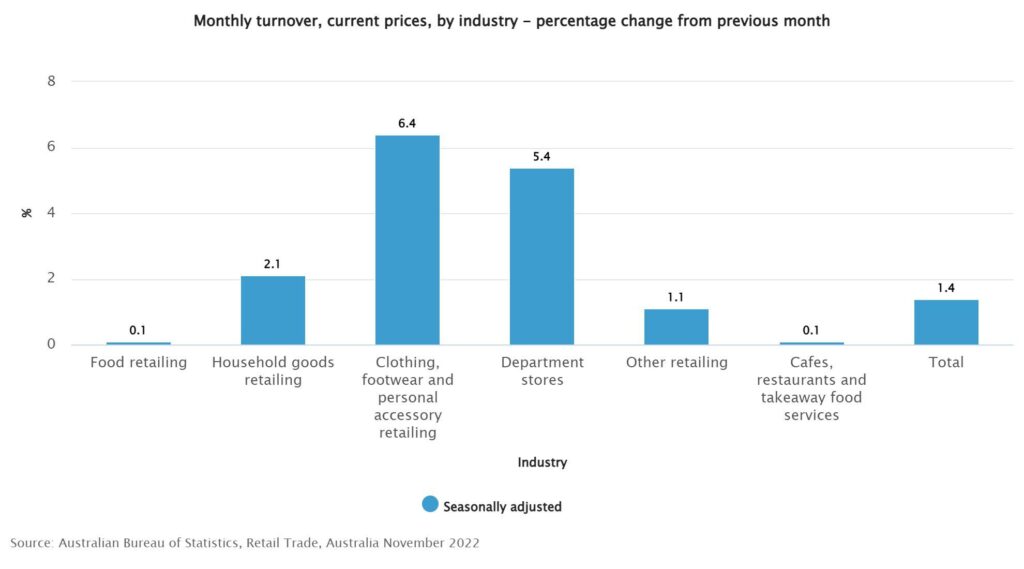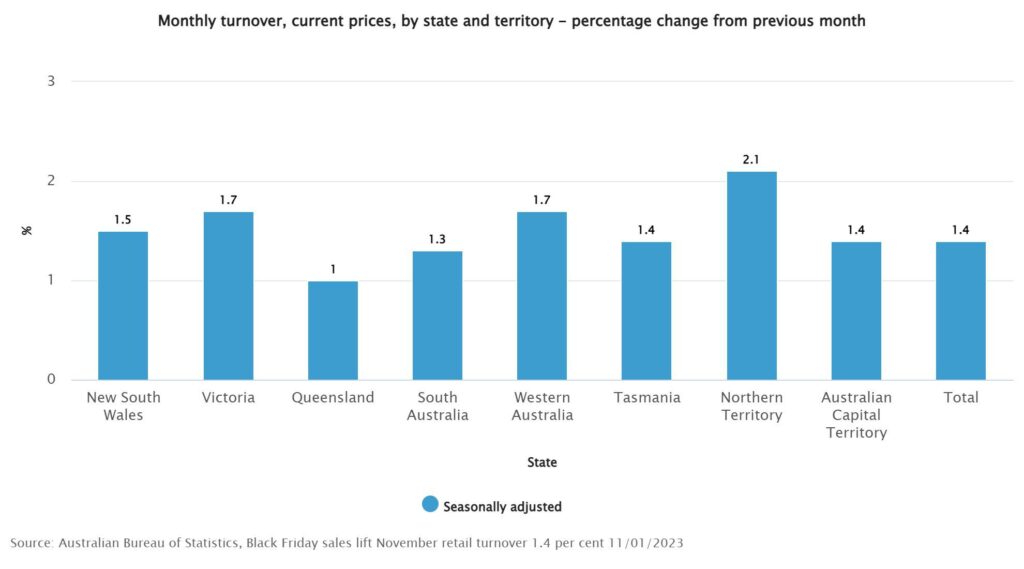
Australian retail turnover rose 1.4 per cent in November 2022 to a new record high, according to figures released today by the Australian Bureau of Statistics (ABS).
This followed a 0.4 per cent rise in October 2022, the smallest rise of the year to date, revised up from a previously published small fall.
Ben Dorber, ABS head of retail statistics, said the rise in turnover was driven by Black Friday sales, which boosted spending on clothing, footwear, furniture, and electronic goods.
“While we typically see a rise in spending around Black Friday sales, the strong seasonally adjusted rise in November 2022 shows that the effect is increasing over time, as the event has become more common across retailers and sales periods become longer.”
“Given the increasing popularity of Black Friday sales, the smaller increase in October may reflect consumers waiting to take advantage of discounting in November, particularly in light of cost-of-living pressures.”
Clothing, footwear and personal accessory retailing had the largest rise (+6.4 per cent) following slower growth in recent months. Department stores also had a strong rise (+5.4 per cent), while household goods retailing rose 2.1 per cent, led by furniture retailing. Other retailing also recorded a rise, up 1.1 per cent.
While turnover rose in industries where Black Friday and other online sales events are common, growth in food-related spending has slowed considerably. Food retailing and cafes, restaurants and takeaway food services both recorded a small rise of 0.1 per cent.
“The monthly growth in turnover for cafes, restaurants and takeaway food services in November was the weakest in 2022 following strong growth earlier in the year as trading conditions returned to normal,” Mr Dorber said.
Retail turnover rose in all states and territories.
“With retail turnover increasing by more than one per cent in all states and territories, it’s clear Black Friday sales are becoming increasingly popular across the country,” Mr Dorber said.
“The last time we saw a general increase of this magnitude across states and territories was during the COVID-19 induced spending in May 2020.”
As previously advertised, the November 2022 reference period release includes the full suite of time series spreadsheets released on 11 January 2023. Subsequent issues will return to the dual release format.






